The Provence wine region, including its flagship subregions like Bandol and Cassis, is hands-down one of France’s most underrated areas.
Ah, Provence! The name conjures up visions of lavender, sunflowers, olive trees, and wine. Not just rosé but also white and red.
This fascinating region sits along France’s Mediterranean coast, bordering the Rhône River to the west and the Côte d’Azur to the east. Physically, it’s only about 150 miles (241 km) long and 100 miles (161 km) north to south, but its impact is profound.
Winemakers have been producing wine here for over 2,600 years, making Provence the oldest wine-producing region of France. It is also the only place to focus on rosé and is home to the only research institute dedicated to the style.

Getting a Lay of the Land: Provence Wine Region
Provence has a fantastic climate, especially for grapes. The region gets lots of sunshine and not too much rain, with warm days and cool evenings. The Mediterranean Sea moderates the temperatures, and the famous “Mistral” wind keeps the vineyards dry, free of pests, and the skies clear.
The geography is diverse, with numerous mountain ranges that texture the landscape, providing gentle slopes (vines love hills!) and sheltered valleys. The soils are also diverse. The western countryside is veined with limestone, but travel east, and the soil is mostly crystalline schist (granite) and volcanic.

Wild, resinous shrubs like rosemary, juniper, thyme, and lavender grow almost everywhere. Many say these plants, collectively called “Garrigue” (on limestone/clay) or ‘Maquis” (when growing on crystalline schist), influence the character of the wines.
With all these different soils, climates, altitudes, and historical influences, it only makes sense that the Provence wine region is home to many varieties of grapes. Some will be familiar, and some not so much, as they only grow here.
White Wine Grapes
White grapes of Provence include:
- Rolle (aka Vermentino)
- Ugni Blanc (aka Trebbiano)
- Bourboulenc
- Clairette
- Marsanne
- Roussanne
- Grenache Blanc
Also familiar are the Bordeaux varieties of Sauvignon Blanc and Sémillon, which are sanctioned in some regions. Regional grapes such as Pascal, Terret Blanc, Spagnol (aka Mayorquin), and Pignerol are still used but are rarer in recent years.
Red Wine Grapes
Most of the traditional red grapes are found elsewhere in France and the Mediterranean; these include:
- Grenache Noir
- Syrah
- Mourvèdre
- Carignan
- Cinsault
- Counoise
- Tannat
- Cabernet Sauvignon
Lesser-known red varieties include Tibouren, Braquet, Calitor, Folle Noire, and Barbaroux.
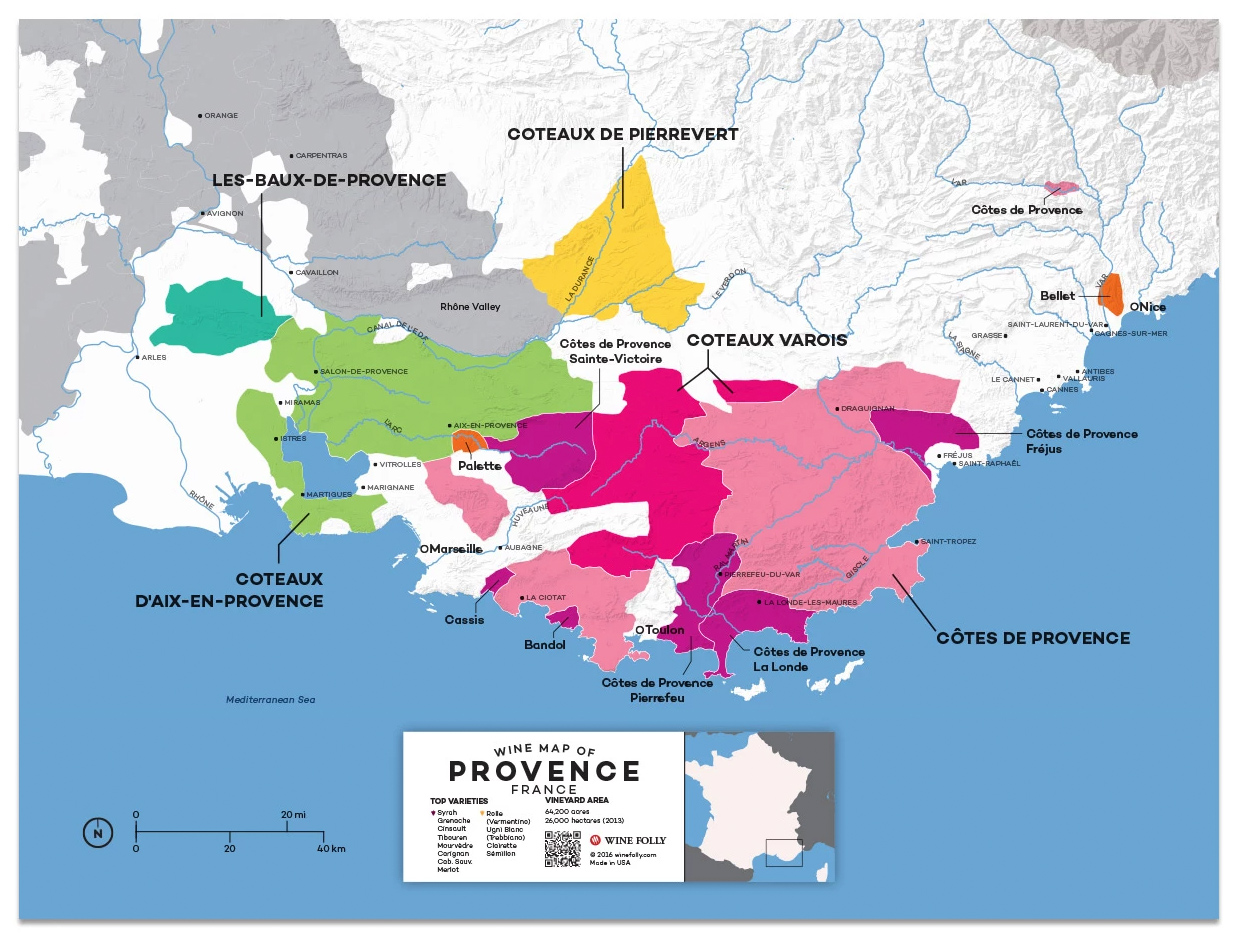
The Wine Regions of Provence
Nine main regions, or AOC (Appellation d’Origine Contrôlée), comprise Provence.
What is an AOC? It’s a specific area for growing grapes defined by many factors that establish its unique character, such as soil type, climate, and geography. Strict regulations govern AOCs. A grower is restricted to what kinds of grapes they can grow, how they grow, and how many tons they can harvest. Wines must abide by specific blending percentages with regulated levels of alcohol and residual sugar. They also must follow strict labeling protocol.
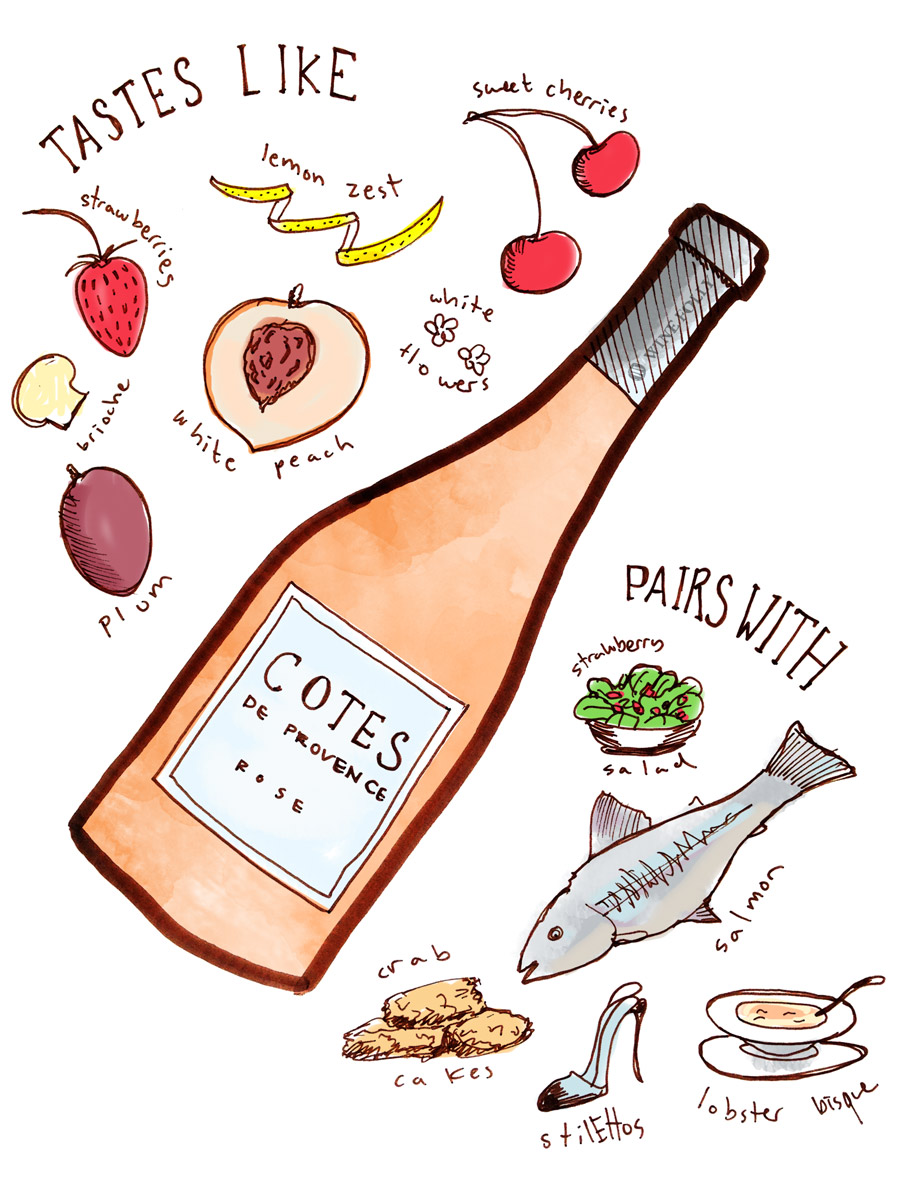
Côtes de Provence
The largest AOC, and the biggest producer with about 75% of wine production (of which 89% is Rosé), this region is also the most diverse.
Because of the region’s size, various influences are at work. Differences in climate, vineyard altitude, soils, and rainfall, for example, can be so varied that there’s a 60-day difference between the start of harvest in the southern coastal vineyards and their cooler, inland counterparts.
There are four geographical subregions in Côtes de Provence, and they’re easy to identify as they are allowed to add their names to the label. Sainte-Victoire, La Londe, Fréjus, and Pierrefeu. Each subregion has distinct characteristics that affect the grapes and wines it produces.
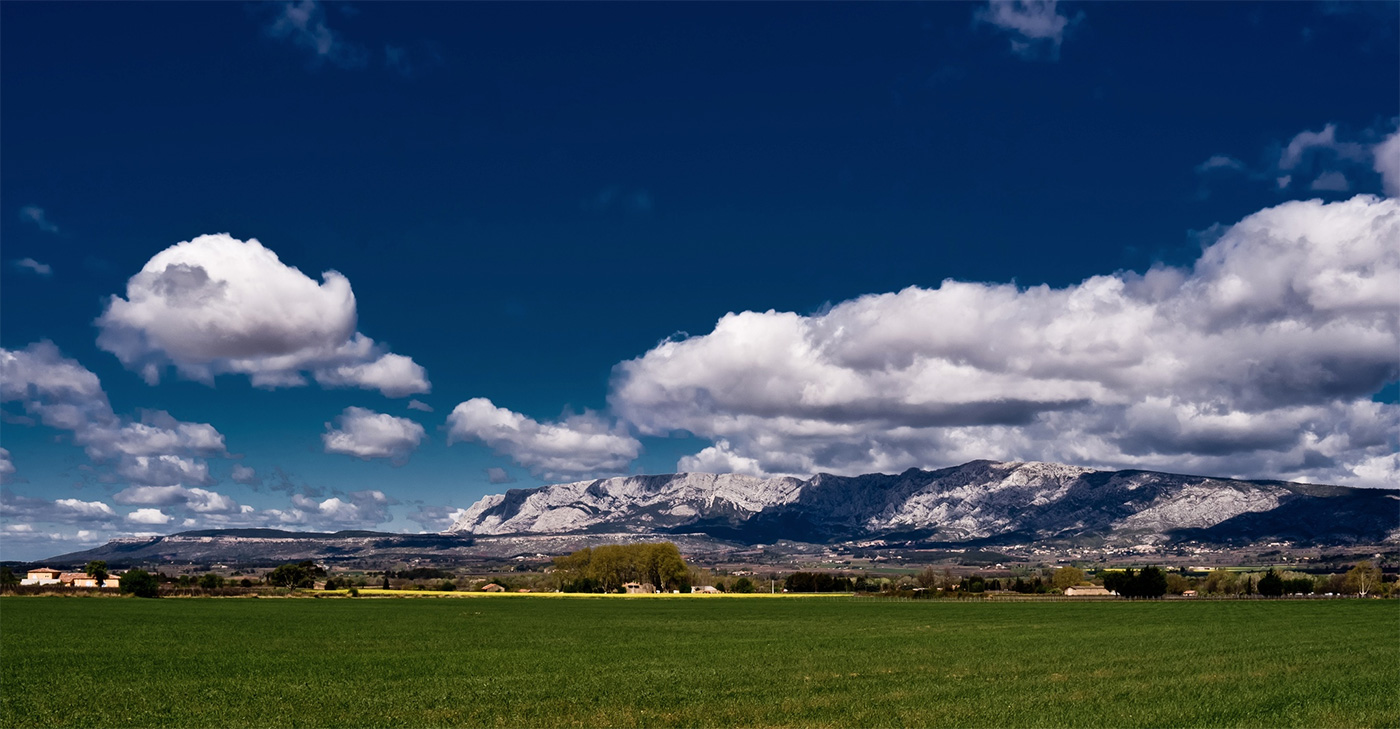
Coteaux d’Aix-en-Provence
This region is second in size and experiences heavy influence from the famous Mistral winds. The vineyards here date back as far as 600 BC and were prized by the Royal Courts of Europe in the 15th century.
Rosé dominates here and is typically a blend of Grenache, Mourvèdre, Cinsault, Syrah, and Counoise. Cabernet Sauvignon grows here, too. The first plantings of this Bordeaux grape were brought to the Provençal vineyards of Georges Brunet (owner of Château La Lagune) just after World War II.
Coteaux Varois de Provence
AKA “The Heart of Provence,” this region features undulating limestone mountain ranges and a multitude of ‘meso-climates.’
Vineyards at these slightly higher altitudes are cooler, so the grapes benefit from longer, slower ripening, giving wines good acidity, complex flavors, and structure. Again, rosés rule here and are from Cinsault, Mourvèdre, Grenache, and Syrah grapes. White wines are mostly made using Rolle.
Les Baux-de-Provence
This is probably the toastiest part of Provence; so hot it’s home to the Val d’Enfer or “Valley of Hell.” North of the ancient city of Arles, the area is named after the fortified 13th-century town of Baux. Vineyards lie on the hillsides of the Alpilles mountains, and, although the climate and rugged terrain are inhospitable, it’s perfect for grapes.
The region is also perfect for biodynamic and organic viticulture. The Mistral wind keeps everything dry, so rot is not a problem, and the average 3,000 hours of sun doesn’t hurt either! In fact, 41% of the growers have gone ‘green.’
Les Baux also sets itself apart by producing predominantly red wines, with Grenache, Syrah, Cinsault, and Cabernet Sauvignon taking center stage.
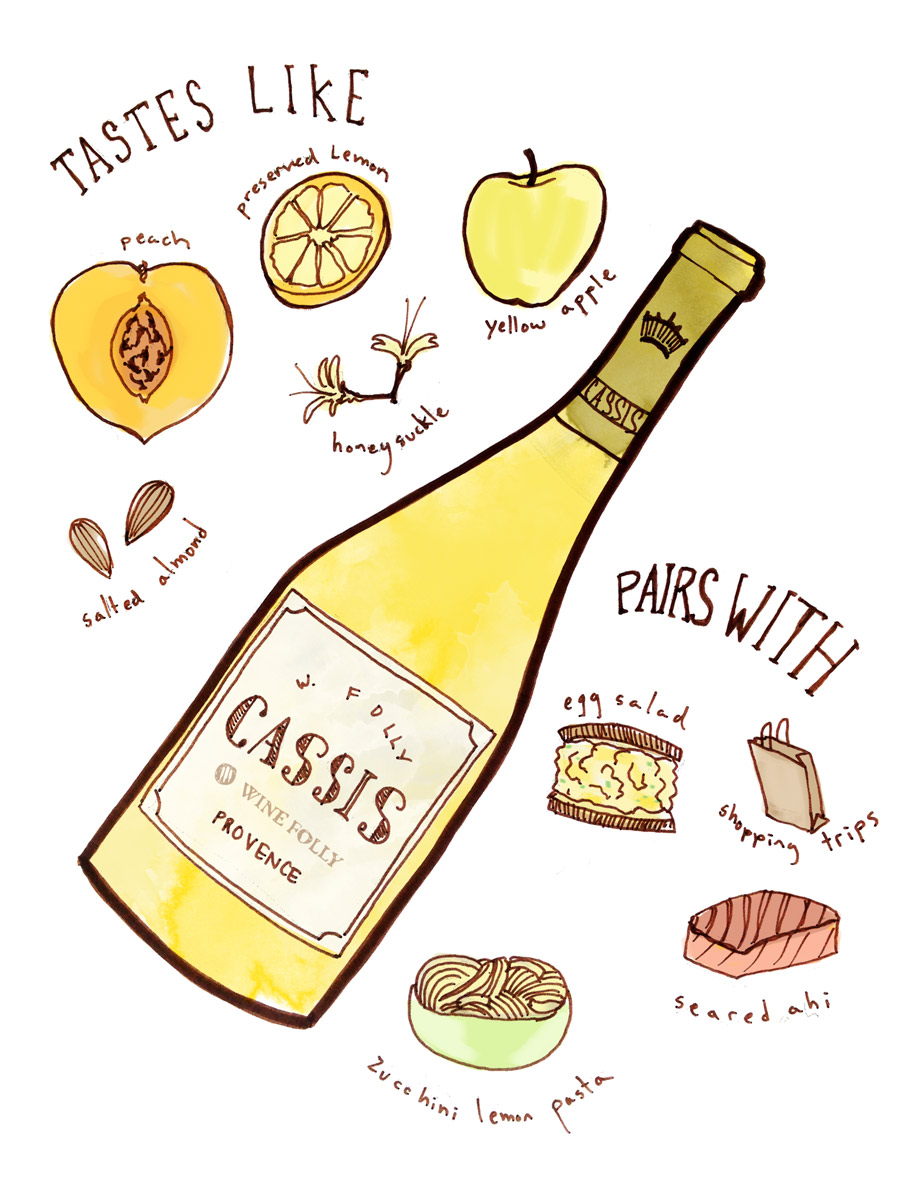
Cassis
Along the Mediterranean coast of Provence, just east of Marseille, the steep, white limestone cliffs of the Massif des Calanques meet the sea. This is where you find the very first AOC of Provence (1936): Cassis.
The Phylloxera epidemic destroyed the vineyards in the 18th century, but they were replanted and today Cassis is best known for its white wines.
Marsanne is the main grape, along with Clairette, so the wines have wonderful elegance and intense aromas of citrus, peach, honey, and dried herbs. Many say you can even taste the salt of the nearby sea.
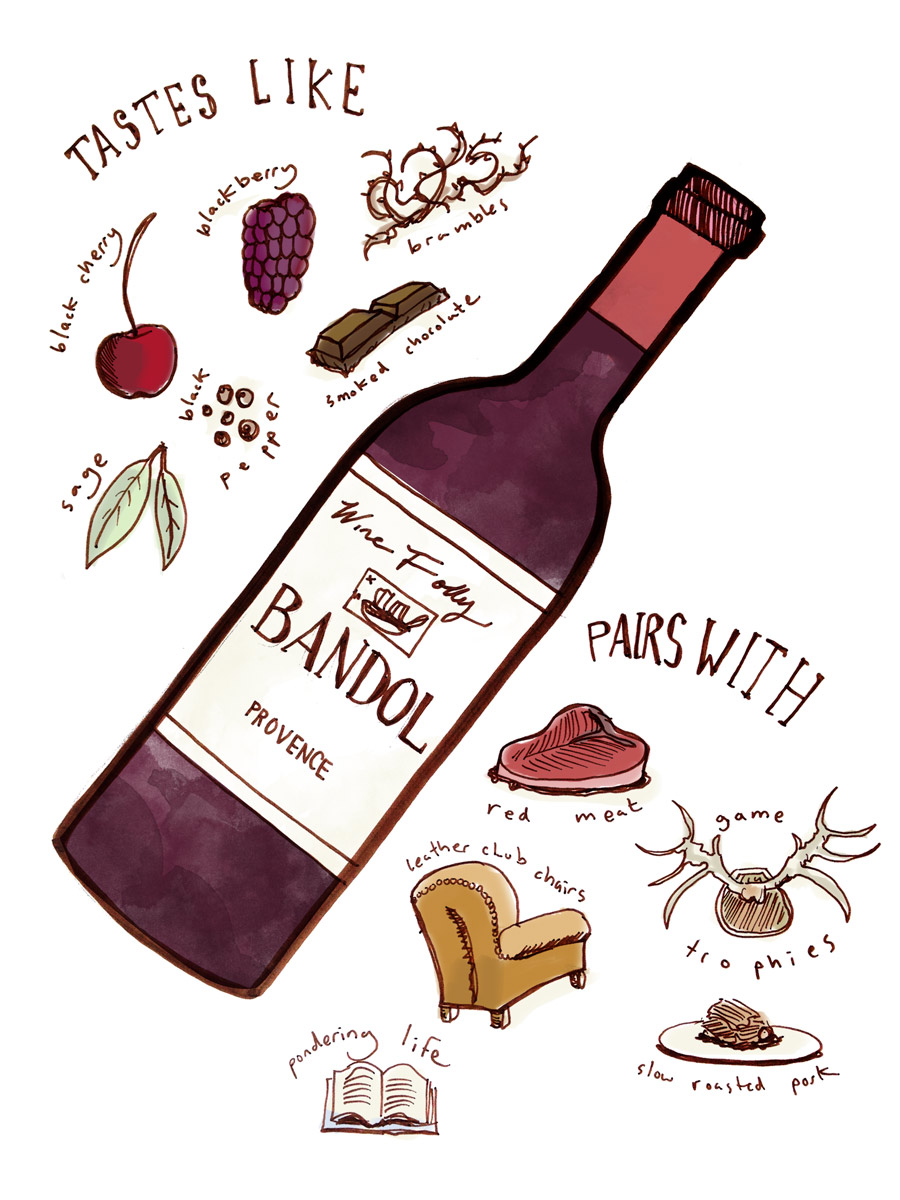
Bandol
If Cassis is all about whites, then its neighbor to the east is the perfect opposite. Bandol, named after the ancient Phocaean port, also suffered from phylloxera. But when replanting began, vignerons recognized that the arid, infertile, well-draining sandy marl and limestone soils were ideal for Mourvèdre, a heat-loving, late-ripening grape that thrives in tough conditions.
Today, Mourvèdre is at the heart of Bandol’s identity. The region’s terraced, hillside vineyards form a natural amphitheater, supported by stone walls called restanques. Here, Mourvèdre produces some of the most structured, age-worthy rosés in Provence, typically blended with Grenache and Cinsault to add lift and perfume. These pale yet powerful rosés are as serious as they come.
Bandol’s signature, however, lies in its rich, intense red wines. By law, they must include at least 50% Mourvèdre (and often far more — up to 95%) and are aged in oak for a minimum of 18 months, resulting in deeply savory, long-lived wines with dark fruit, spice, and gamey depth.
Palette
Nestled below Coteaux d’Aix-en-Provence and at only 100 acres, Palette is the smallest AOC of Provence. The Romans planted the vineyards on the limestone and clay soils around 100 BC, and the area is now home to over 25 grape varietals (some obscure). Winemakers must hand-harvest and are subject to specific blending rules and aging requirements.
Mourvèdre is the main grape in rosé and red wines, along with Cinsault, Grenache, and a host of unusual grapes like Castets, Muscat de Hamburg, Petit Brun, and Téoulier. The wines must age in oak for 18 months; many find them similar to Bandol’s.
Whites represent about 37% of the area’s production and are often a blend of Clairette Blanche, Picardan, Bourboulenc and unusual grapes like Panse Muscade, Terret Gris, Piquepoul Blanc, and Aragnan. Both white and rosé wines must age for at least eight months before release.
It may be small in size, but Palette is big on preserving the traditions of Provence wine.
Bellet
The vineyards of Bellet dot the steep hillsides surrounding the city of Nice on the far eastern edge of Provence. This is another area that uses some uncommon grape varietals. The dominant white varietal is Rolle (Vermentino), and Bellet is the only AOC in Provence that is permissible to use Chardonnay. Red and rosé are mostly made with Braquet and Folle Noire. Rosé from Bellet has a distinctive aroma of rose petals.
Pierrevert
Pierrevert is the newest (1998) and most northerly of the Provence AOCs in the Alpes-de-Haute-Provence, next to Luberon. The grape varieties and style have a definite Rhône influence.
You’ll find red blends of Grenache and Syrah with perhaps some Cinsault and Carignan, and whites such as Grenache Blanc, Rolle (Vermentino), Roussanne, and Marsanne. Rosé is a big deal here, made from the same grapes as the reds, but it differs from the other parts of Provence.
The area’s rules dictate that at least 50% of the wine must be made using the “saignée” method.
The Provence wine region will surely steal your heart if you try its wines. It has it all, whether you’re looking for white, rosé, or red!